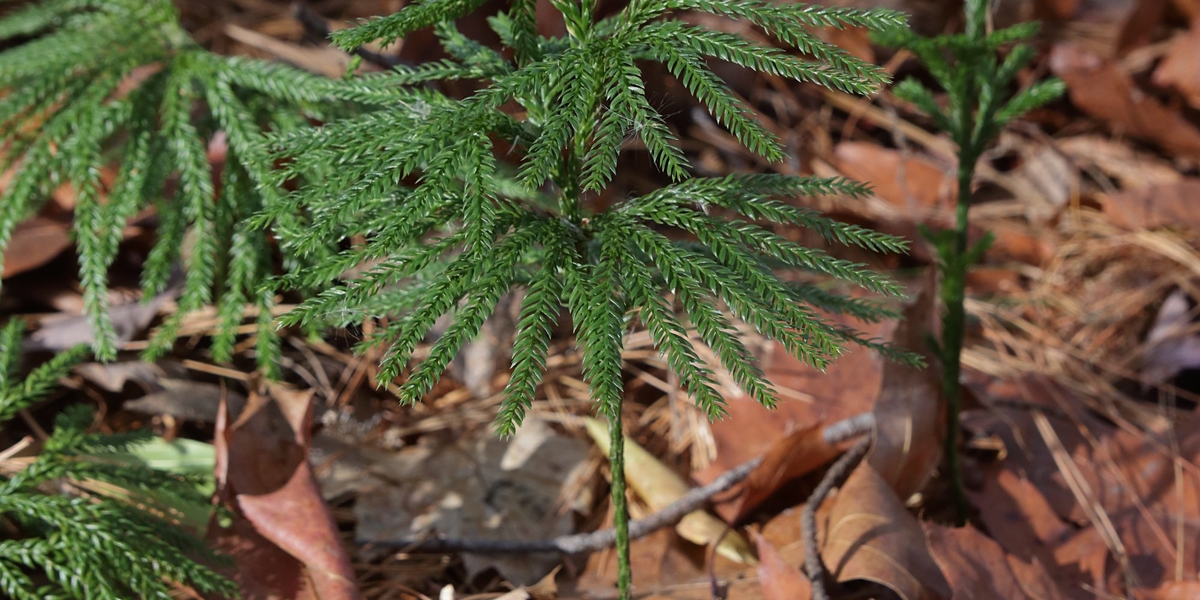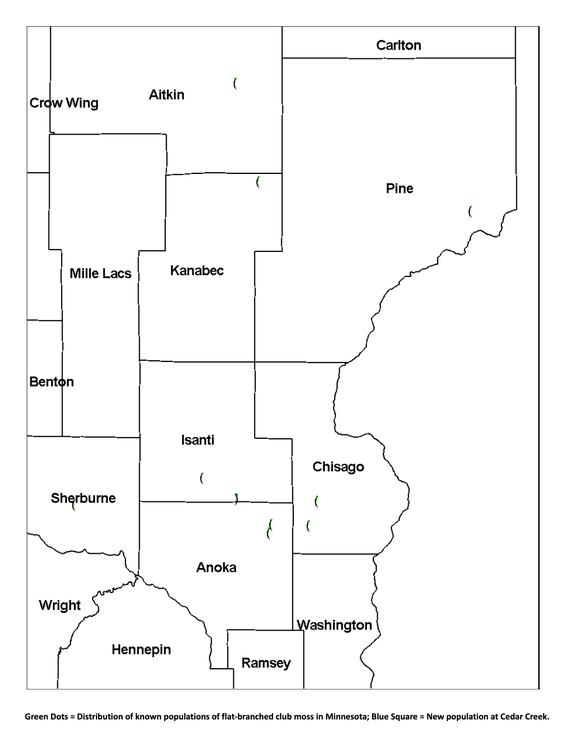

It is sometimes assumed that we may know all of the species found in the state, since there is a history of plant collecting and surveying going back over 150 years. It turns out that this is not the case. The flat-branched tree clubmoss (Dendrolycopodium obscurum) had been erroneously reported in Minnesota for many years, appearing in various field guides and technical manuals. However, close examination of specimens in the state’s herbaria found these records came from misidentified specimens.
This all changed in 2020, when the plant was discovered at a DNR Wildlife Management Area in Isanti County. The discovery triggered an intense survey of similar habitats across east-central Minnesota for additional populations. In total, over 60 similar sites were surveyed, and eight more populations were found in Aitkin, Anoka, Chisago, Isanti, Kanabec, Pine and Sherburne Counties. In the fall of 2022, an iNaturalist observer reported the species at the Cedar Creek Ecosystem Science Reserve. The photos of this observation were quite convincing, so we reached out to Cedar Creek to survey the site. We relocated the observation, and the identification was correct! This new addition brings the total to ten known populations in Minnesota, and the second for Isanti County. Most of the populations found to date have been on the Anoka Sandplain. While currently not listed, we have included the species on the Minnesota Department of Natural Resources watchlist and will consider it for listing during the next list revision.
Flat-branched tree clubmoss is in the lycophyte (clubmoss) family. The common name of this group of plants is a bit misleading, as lycophytes are not true mosses. While evolutionarily they make up a more primitive group of plants, they do contain vascular tissues. As a result, these plants are more closely related to the ferns. In many fern field guides you may have seen this group of plants referred to as the “fern allies.” Flat-branched tree clubmoss is differentiated from other species in the genus by having leaves appressed to the stem and leaves on the underside of the branches that are much reduced and also more or less appressed. This latter feature creates the appearance of the branches being flat in cross-section.
An opportunity to learn more about this species (and other ferns and lycophytes) will be available soon. Welby Smith, botanist with the Minnesota Department of Natural Resources, currently has a comprehensive book titled The Ferns and Lycophytes of Minnesota under production with University of Minnesota Press. It is expected to be available later this summer. – Derek Anderson
Derek Anderson is a botanist and plant biologist with the Minnesota Biological Survey within the Minnesota Department of Natural Resources.